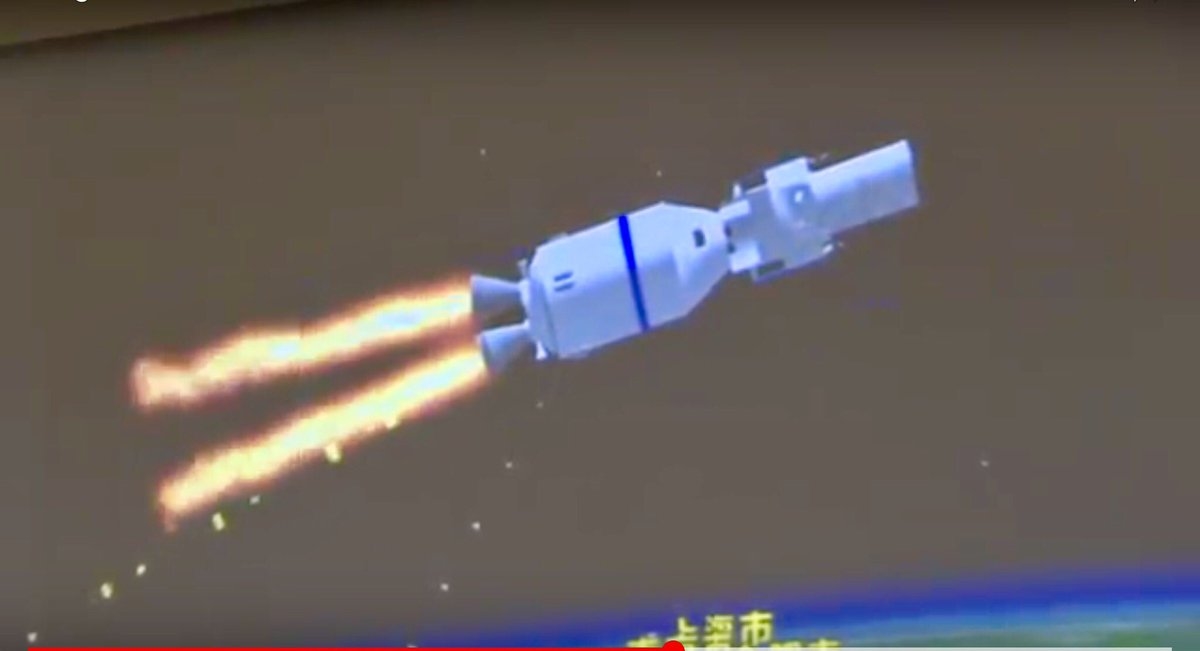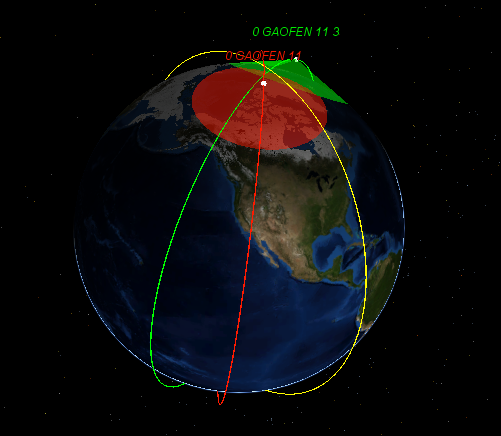On July 31st, China added a new member to its Gaofen Earth Observation constellation: Gaofen-11 (GF-11) was launched atop a CZ-4B rocket. While the early Gaofen satellites were openly described by their designers, this one is a bit more obscure. It was not in the list of planned Gaofen satellites, and the launch caught observers by surprise, so most likely it is a military satellite operating under the guise of the Gaofen programme.
However, the Chinese always lift a bit of the veil of secrecy by releasing footage of the launch, with views of the rocket and of the control center, but also footage of satellite separation. Interestingly, 3D computer models are used in the control center to represent the rocket and its payload, and these models are not censored by the CCTV state television. They even showed those models with some of the military Yaogan satellites, probably as a form of strategic signaling towards their competitors. That way they can show the United States for instance that they mean business when it comes to strengthening their intelligence capabilities. Here is the footage for GF-11:
The most interesting part is this image of the satellite still attached to the third stage of the Long March rocket.

Knowing the stage has a diameter of 2.9m, and is almost completely parallel to the virtual camera, the diameter of the satellite’s aperture can be estimated at 1.7m. That means it carries a big mirror: the largest mirror carried by a commercial Earth Observation satellite is Worldview 3 & 4 ‘s 1.1m mirror, manufactured in the USA by ITT Exelis. For non-commercial satellites, the French have published images of their Helios 2 spy satellites, suggesting they have a 1.4m mirror. GF-1 beats them all, and is in fact only outclassed in its category of an optical imaging satellite by two US products:
– the Hubble Space Telescope, which has a 2.4m mirror working at optical wavelengths
– the KENNEN optical spy satellites, generally known under the KH-11 designation, which are rumoured to have a similar mirror size to Hubble. This is supported by the fact that the National Reconnaissance Office gifted two 2.4m optical mirrors it no longer had use for to NASA, which plans to use it for its WFIRST observatory. Additionally, people who have seen high-resolution images of these satellites have described them as “stubby Hubbles“.
So China seems to have accomplished a great leap forward in space optics. As GF-11 is positioned on a 247x693km elliptical orbit (and moves to a 470km circular later), a 1.7m mirror would give it a ground resolution of 8 to 10cm at perigee, at around 10AM local solar time and at 20°N, right over India and the South China Sea. [Resolution was disclosed in November 2020 by Academician Li Deren, and he said it is 0.1m, so the prediction was very close]. At the average altitude of 470km, the resolution is still 15 to 20cm, surpassing all commercial satellites and most reconnaissance satellites. This propels China into the select club of countries that can acquire NIIRS 8-9 satellite imagery, meaning the resolution is high enough to identify small hand-held weapons. Presumably the only members of this club are the US and now China, and that will continue to be the case in the foreseeable future, with maybe Russia joining them later if the Razdan program fulfills its promises.

Interestingly, China plans to launch a “Chinese Hubble” to accompany its next space station, in the form of a dockable optical astronomy telescope with a 2m mirror. There are likely synergies between the developments in space optics for this national prestige project and the military satellites. Future developments will be even more impressive, and China is clearly aiming to be the new leader in this domain.

November 2021 update: China has now launched two additional satellites of the same model, GF 11-02 in September 2020 and GF 11-03 in November 2021. Jonathan McDowell created a nice graphic showing the evolution of the orbits of the first two:
The satellites are on three separate planes, with local time of passes being 09:15, 11:00 and 13:30





China just announced a 4.03 meter diameter silicon carbide (SiC) mirror today.
LikeLiked by 1 person
Reference?
LikeLike
http://www.xinhuanet.com/english/2018-08/22/c_137410217.htm
LikeLike
[…] is now in a circular orbit but its resolution remains impressive due to its large mirror. Here is a more detailed article on the […]
LikeLike